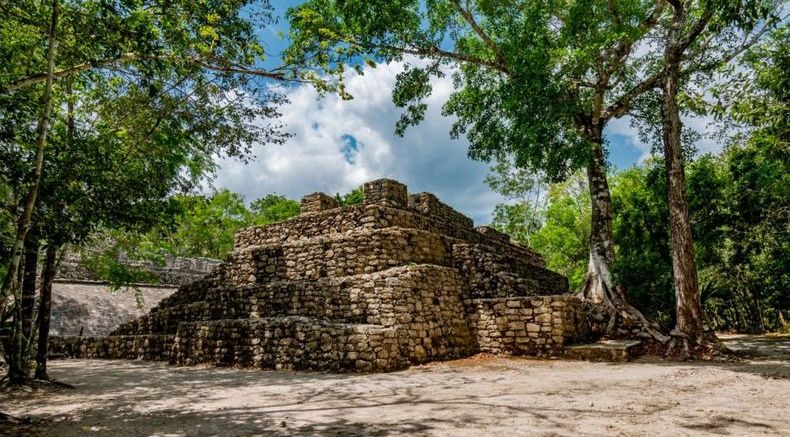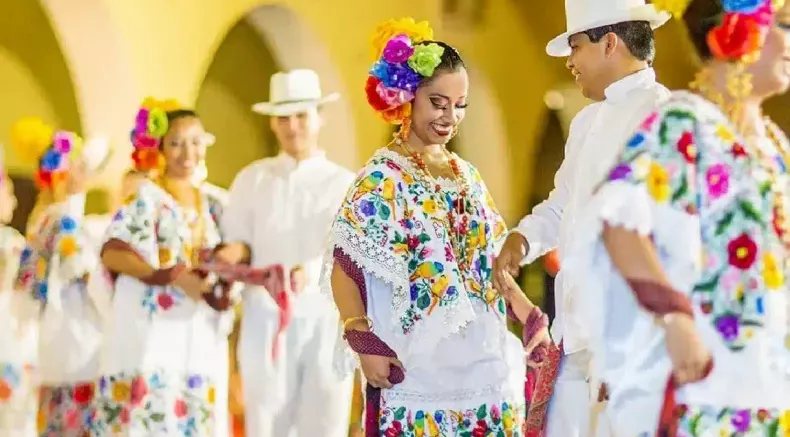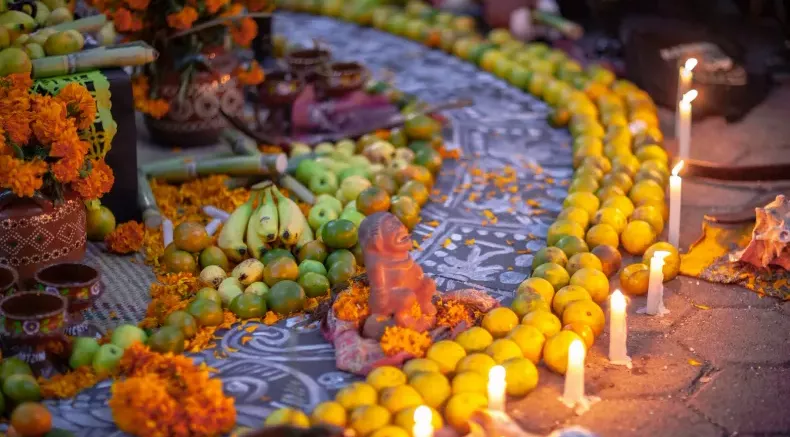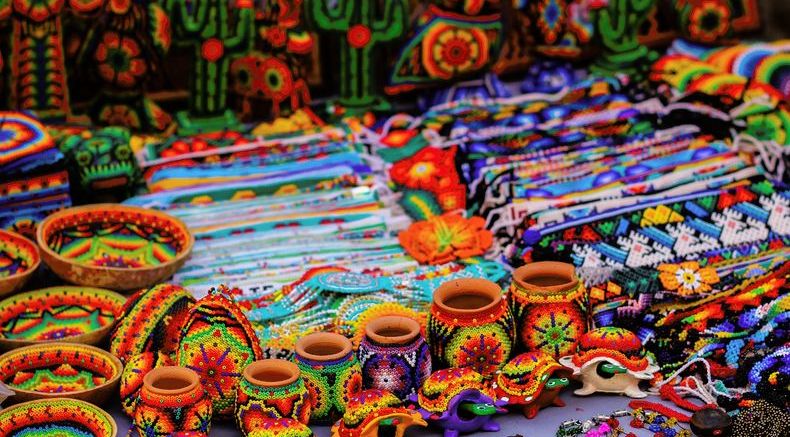Cancun, located in the sun-soaked Yucatan Peninsula, is known for its pristine beaches and vibrant nightlife but this region is also rich in history, natural beauty, and cultural significance. The region offers a fascinating glimpse into Mexico’s ancient past, stunning landscapes, and rich traditions.

1 of 5
Cancun, Mexico

2 of 5
Cancun, Mexico

3 of 5
Cancun, Mexico

4 of 5
Cancun, Mexico

5 of 5
Cancun, Mexico
Getting to Cancun
Cancun International Airport (CUN) is one of the busiest in Latin America and offers direct flights from major cities around the world. The airport is conveniently located just 20 minutes (depending on traffic) from Cancun's Hotel Zone. Taxis, private shuttles, and public buses are readily available to transport you to your destination. Please note, local buses take cash only. See more information here.
Visas
ISUOG strongly advises that attendees only register for the World Congress once they are confident that they can legally enter Mexico /will be able to obtain a visa in time to do so. Refunds will not be provided to those who have not allowed enough time to have their visa approved, or have their visa rejected. PLEASE NOTE: It is the attendee’s own responsibility to check and fulfil any visa requirements and arrange personal travel insurance wanted/needed for entry into Mexico (and for any other countries that attendees stop at on the way to Mexico).
The official website of the Government of Mexico contains information on all visa requirements for entry to Mexico. Furthermore, this website serves as an independent resource that may prove valuable for delegates who are uncertain about their visa requirements. Please note that ISUOG does not assume responsibility for the accuracy of the information provided, and does not claim liability if any information is found to be incorrect.
To obtain a visa invitation letter from ISUOG, please register for the Congress and then click the link in your confirmation email to download the letter.
General travel information
-
Travel: Many hotels are within walking distance from the Congress venue. There are also licensed taxis and bus routes available. Travel responsibly by choosing only authorized providers.
-
Currency: The Mexican Peso (MXN) is the local currency, but U.S. dollars are widely accepted in tourist areas. Check the exchange rate here.
-
Tipping: There is a tipping culture in Cancun - expect to be asked to add service when paying in restaurants, and to pay cash tips in hotels, etc.
-
Language: Spanish is the official language, though English is widely spoken in tourist zones.
-
Weather: Cancun enjoys a tropical climate year-round, and mid-September falls during the rainy season. Temperatures are warm, averaging between 27–31°C (81–88°F), with high humidity. While brief afternoon or evening showers are common, they are typically followed by sunny skies, so we recommend you pack for all eventualities - hot weather clothing plus layers, a sun hat and an umbrella, sun cream, etc
Safety information
- Travelling generally: Use Uber or ask your hotel/restaurant to order you a licensed taxi, do not use unlicensed taxis. At airports, only use authorised pre-paid airport taxi services. At night, be cautious, stay in well-lit pedestrian streets and tourist zones.
- Out and about: pickpocketing is common so please avoid wearing expensive-looking clothing, jewellery or watches. Take care if withdrawing money from ATMs and limit the amount of cash or credit and debit cards you carry.
- Water: In Mexico, it is recommended to avoid drinking tap water. Always check with the hotel or restaurant you are dining at before consuming any water (including ice)
- Mosquitos: Wear mosquito repellent if you are going to be outside
Exploring Cancun
Here’s a look at some must-see sites that highlight Cancun’s historical and cultural heritage.
Historical sites
El Rey Ruins (Zona Arqueológica El Rey)
One of the most accessible Mayan sites in Cancún, the El Rey Ruins are located within the Hotel Zone. The ruins consist of over 40 stone structures that date back to 1200-1550 AD. The site was an important trading and fishing hub for the Mayans, and archaeologists believe it also served as a ceremonial center. Today, visitors can explore the remnants of temples and residential buildings while observing the many iguanas that have made the ruins their home.
El Meco Ruins
Situated just north of Cancún, El Meco is a lesser-known but historically significant Mayan site. It features a central pyramid known as “El Castillo,” which stands at about 12.5 meters (41 feet) tall and offers stunning views of the coastline. The site was likely a strategic port city due to its location near Isla Mujeres. It also played a role in regional commerce and religious ceremonies.
San Miguelito Archaeological Site
Located within the Museo Maya de Cancún (Cancún Maya Museum), the San Miguelito ruins offer a chance to walk through ancient structures nestled within lush vegetation. This site was once part of a thriving Mayan coastal settlement that engaged in trade with other Mesoamerican cultures. The nearby museum displays artifacts from the Mayan civilization, including pottery, tools, and sculptures.
Chichen Itza
Chichen Itza is one of the most famous Mayan archaeological sites and was once a major city in the Mayan civilization. The site's most iconic structure is the El Castillo pyramid, also known as the Temple of Kukulcán.
Every year, during the spring and fall equinox, the sun creates the illusion of a serpent slithering down the steps of the pyramid. This site also features the Great Ball Court, the Temple of the Warriors, and the Sacred Cenote (a large well used for sacrifices).
Natural wonders
Isla Contoy
A protected national park and a paradise for bird lovers, Isla Contoy is a pristine island located about 30 kilometers north of Cancún. The island is home to over 150 species of birds, as well as rich marine life, including sea turtles and coral reefs. The island's natural beauty and conservation efforts make it a must-visit for nature enthusiasts. Tours to Isla Contoy are regulated to preserve its delicate ecosystem, ensuring visitors experience its unspoiled landscapes.
Cenotes Near Cancún
Cenotes are natural sinkholes filled with crystal-clear freshwater, and they were considered sacred by the Mayans, who believed they were portals to the underworld. Some of the best cenotes near Cancún include:
-
Cenote Azul – A picturesque open-air cenote perfect for swimming and snorkeling.
-
Cenote Dos Ojos – One of the most famous cenotes in the Yucatán Peninsula, featuring interconnected underwater caves and stunning rock formations.
-
Cenote Sagrado (Sacred Cenote) – Located near Chichén Itzá, this cenote was used for Mayan rituals and offerings.
Sian Ka’an Biosphere Reserve
A UNESCO World Heritage Site, the Sian Ka’an Biosphere Reserve is a vast protected area of wetlands, lagoons, and tropical forests. Visitors can explore the reserve’s diverse ecosystems by taking boat tours through mangroves, spotting exotic wildlife, and visiting ancient Mayan canals that were once used
Cultural sites
Museo Maya de Cancún (Mayan Museum of Cancún)
This museum is an essential stop for history and culture lovers. It houses an impressive collection of Mayan artifacts, including ceramics, jewelry, and carvings from sites across the Yucatán Peninsula. The museum provides insight into the daily life, religion, and achievements of the Mayan civilization, offering a deeper understanding of the region’s heritage.
Los Mercados
The Mercado is where people find the freshest fruits, vegetables, and recently caught chicken, pork, meats, fish, and other amazingly delicious food. While at the Mercado, you can catch up with friends, talk with the vendors, and even grab a table at one of their food booths to have a delicious breakfast of chilaquiles or molletes with fresh refried beans and so much more! Also, there is more than just food at the market; here, you might need to pick up a gift for someone or have the heels of your shoes fixed.
Mercado 28
For a taste of authentic Mexican culture, Mercado 28 is a bustling market where visitors can shop for handmade crafts, textiles, and souvenirs. The market is also home to traditional food stalls serving local dishes such as cochinita pibil (slow-roasted pork) and ceviche. It’s a great place to experience the vibrancy of Cancún’s culture and interact with local artisans.
Parque de las Palapas
Located in downtown Cancún, Parque de las Palapas is a lively cultural hub where locals gather for entertainment, street food, and artisan markets. The park often hosts live music performances, traditional dance shows, and festivals celebrating Mexican and Mayan traditions.
Local restaurants ideas
Here is a list of some of the most recomended restaurants in the city.
ILIOS (Greek estiatorio): please find more info here.
Nicoletta (Modern Italian kitchen): please find more info here.
Porfirio's (Contemporary Mexican Kitchen): please find more info here.
Fred's (Sea food and raw bar): please find more info here.
Harry's grill (Prime stakehouse and raw bar): please find more info here.
Señor Frog’s (mexican Food y fiesta): please find more info here.
La Vicenta (expertos en la parrilla): please find more info here.
Puerto Madero (Fish and Stake house) : please find more info here.
